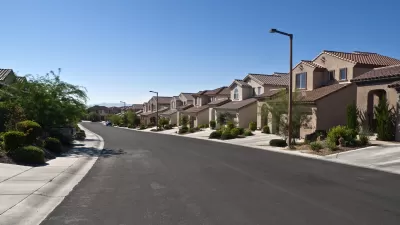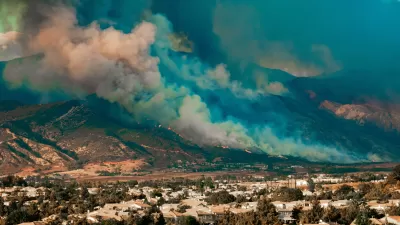A new global platform will help the world identify and encourage opportunities for more proximity in the built environment—development patterns that can help reduce sources of greenhouse gas emissions and other forms of pollution if built well.

A new platform, the Global Observatory of Sustainable Proximities, was launched during the Second United Nations Habitat Assembly earlier this week. The platform “will serve as a go-to knowledge and capacity building platform collecting information about local initiatives while supporting and promoting urban proximities at a global scale,” according to a press release announcing the launch.
“Together, the Observatory partners will develop a globally applicable concept based on proximity, official measures and indicators, a global centre for knowledge sharing and capacity building, and a global network to support cities in implementation,” explains the press release.
In the ensuing days since the press release was published, the East Coast of the United States was smothered by wildfire smoke drifting down from ongoing wildfires to the north in Canada, sending a palpable signal of the terrible damages of climate change to a heavily populated and relatively wealthy region. The development proximity sought by the new platform has been repeatedly shown to reduce causes of greenhouse gas emissions, and the United Nations has repeatedly called on the United States to transform its land use and transportation practices to help slow rising greenhouse gas emissions around the world. More proximity in development patterns would also prevent sprawl on the wildland-urban interface, which introduces various environmental risks and provides fuel for wildfires.
The platform was launched by four founding partners: the Entrepreneurship, Technology and Innovation Chair of the IAE Paris Sorbonne Business School (Chaire ETI), C40 Cities, United Cities and Local Governments (UCLG) and the United Nations Human Settlements Programme (UN-Habitat).
FULL STORY: Global platform launched to support ‘proximity’ in urban planning

Study: Maui’s Plan to Convert Vacation Rentals to Long-Term Housing Could Cause Nearly $1 Billion Economic Loss
The plan would reduce visitor accommodation by 25,% resulting in 1,900 jobs lost.

North Texas Transit Leaders Tout Benefits of TOD for Growing Region
At a summit focused on transit-oriented development, policymakers discussed how North Texas’ expanded light rail system can serve as a tool for economic growth.

Using Old Oil and Gas Wells for Green Energy Storage
Penn State researchers have found that repurposing abandoned oil and gas wells for geothermal-assisted compressed-air energy storage can boost efficiency, reduce environmental risks, and support clean energy and job transitions.

Santa Barbara Could Build Housing on County Land
County supervisors moved forward a proposal to build workforce housing on two county-owned parcels.

San Mateo Formally Opposes Freeway Project
The city council will send a letter to Caltrans urging the agency to reconsider a plan to expand the 101 through the city of San Mateo.

A Bronx Community Fights to Have its Voice Heard
After organizing and giving input for decades, the community around the Kingsbridge Armory might actually see it redeveloped — and they want to continue to have a say in how it goes.
Urban Design for Planners 1: Software Tools
This six-course series explores essential urban design concepts using open source software and equips planners with the tools they need to participate fully in the urban design process.
Planning for Universal Design
Learn the tools for implementing Universal Design in planning regulations.
Ascent Environmental
Borough of Carlisle
Institute for Housing and Urban Development Studies (IHS)
City of Grandview
Harvard GSD Executive Education
Toledo-Lucas County Plan Commissions
Salt Lake City
NYU Wagner Graduate School of Public Service





























